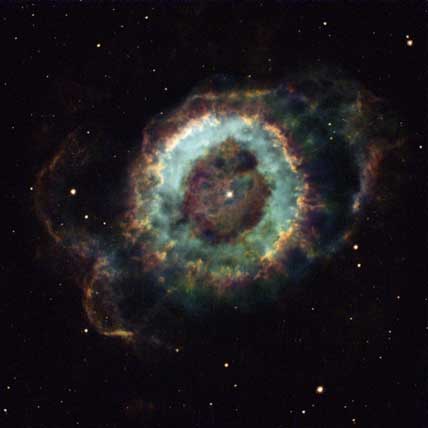
The Little Ghost Nebula, also known as NGC 6369, is more friendly than frightening to astronomers.
Courtesy Hubble Heritage Team (STScI/AURA) and NASA.
Peering toward the constellation Ophiuchus last February, Hubble’s Wide Field Planetary Camera 2 captured the planetary nebula NGC 6369, often referred to as the "Little Ghost Nebula."
To capture this scene Hubble combined several images that show the different degrees of ionization in the nebula. The blue-green ring represents advanced ionization. Blue is where the oxygen atoms have lost two electrons, while the green represents hydrogen atoms that have lost a single electron. The red areas show nitrogen atoms that have lost one electron.
A planetary nebula occurs when a mid-size star nears the end of its life. It expands to become a red giant and subsequently expels its outer layers into space. These sloughed gas shells fluoresce in the ultraviolet light coming from the hot stellar core, producing the colorful glows we see from Earth. In 8 billion years our Sun will undergo a similar fate.
 0
0
Comments
You must be logged in to post a comment.